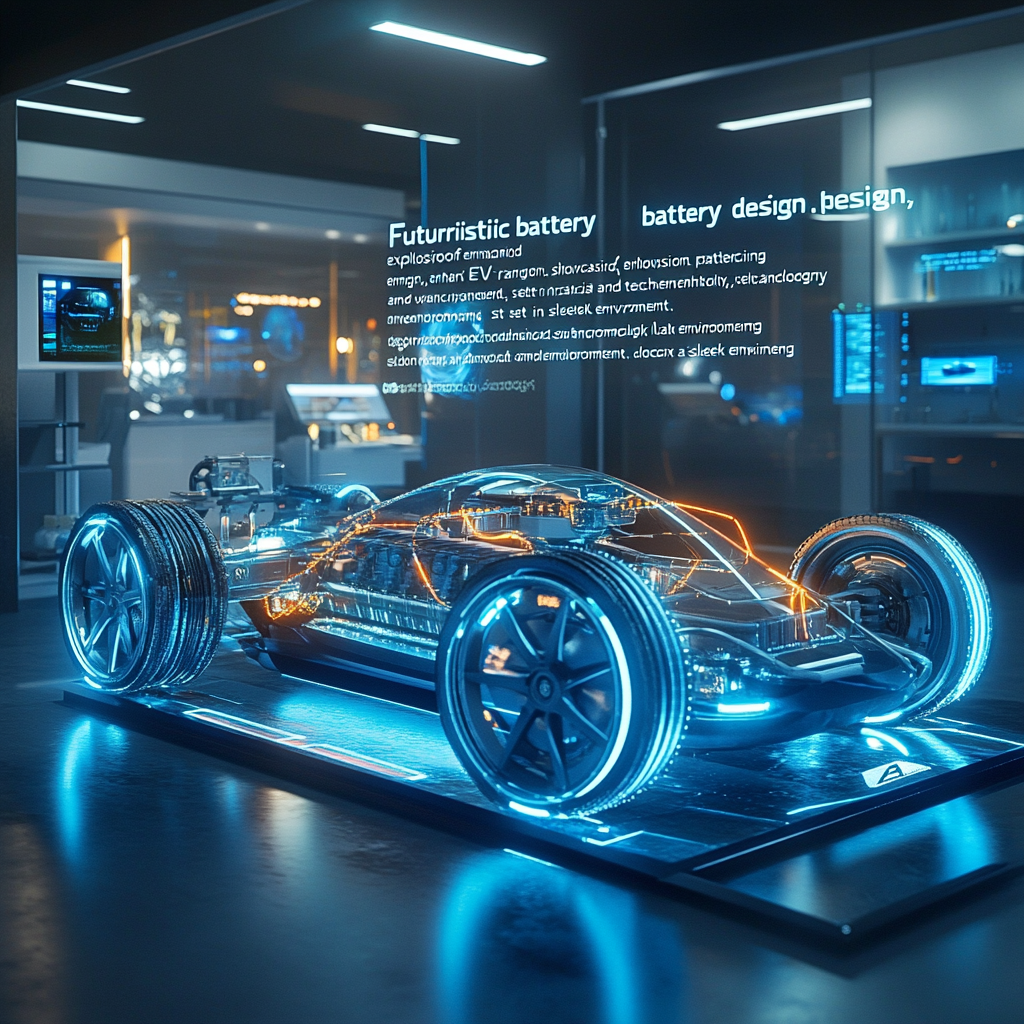
Electrode design could prevent explosions in next-gen batteries, allowing 1,000 km on a single charge
Electrons Unleashed: The Revolution in Battery Technology
Picture this: an electric vehicle glides past the competition while you bask in the serene hum of your battery’s incredible range—1,000 kilometers on a single charge! Too fantastical to imagine, right? Well, thanks to a spark of brilliance from researchers at UNIST in South Korea, what was once part of a sci-fi fantasy is inching closer to reality. Buckle up as we dive into the intricacies of battery design that promise to make explosions a relic of the past!
The Dreadful Problem: Oxygen’s Chaotic Dance
Batteries, specifically lithium-ion ones, have long been the unsung heroes in our quest for clean energy. However, their Achilles’ heel lies in oxygen—a seemingly innocent element that turns into a villain when exposed to high voltages. At the stress point of around 4.25 volts, oxygen can become highly unstable, letting off gas like it’s an escape artist at a carnival. When this happens, batteries not only risk losing efficiency but might also become ticking time bombs. And who wants their car to explode while charging?
The Ingenious Solution: A Little Metal Swap
Here’s where UNIST’s innovative research comes in. Instead of letting nature run its chaotic course, these savvy scientists decided to outsmart oxidation. They played detective by swapping out transition metals with those boasting lower electronegativity. Think of it as an artist reshuffling their color palette—less reactive combination means oxygen can’t wreak havoc.
How Does It All Work? (Without Getting Lost in Science)
- Electron Redistribution: By introducing elements that are more electron-friendly, oxygen’s mischief is really curtailed. Less interaction with greedy electrons means fewer explosive escapes.
- Structural Integrity: With less oxidation, the seal on performance holds—no more bloated components or compromised structures in the battery.
- Energy Density Elevation: Results from this combination render a higher energy density—imagine fitting more sweets in a jar rather than having half-empty space!
Backed by Evidence: Experimental Validation
In the lab, this wasn’t just a trial run. Substituting nickel for ruthenium led to tangible changes; X-ray analysis showed greatly reduced gas emissions. Theoretical frameworks pinned down by density functional theory computations backed these findings, proving this isn’t merely a pie-in-the-sky idea. It’s real, checked, and ready for your attention.
Beyond Just Cars: Implications of This Breakthrough
But wait, don’t let the automotive sector take all the glory! This electrode innovation can seep beyond electric vehicles into the entire spectrum of technology. Picture your medical devices humming along without superfluous recharging, or wearables sparking joy with extended battery life. Think of electric grids that thrive on efficiency with minimal risks. The avenues for application are vast and thrilling!
This technology is still in the academic phase, so don’t rush to throw away your current battery just yet. Though we’re not ready to queue in front of the nearest electric car dealership, UNIST’s strides warrant commendation. They’ve lit a flame of hope by addressing the pesky oxidation concerns and setting a course toward a promising future.
Why Does This Matter? Let’s Break It Down
- Safety First: A major leap towards safer batteries means fewer risks for everyone, whether you’re using batteries in vehicles or other devices.
- Unmatched Range: Envision traveling thousands of kilometers without worrying about charging. Freedom, anyone?
- Paving the Way for Future Innovations: This isn’t just about playing it safe—it’s setting the stage for further advancements and new possibilities across tech industries.
Time to Charge into the Future
With the need for efficient, safe, next-gen batteries at an all-time high, breakthroughs like these will be pivotal as we power forward into an electrifying future. Every innovation takes us closer to a sustainable tomorrow where electric vehicles and technology coexist harmoniously. Your electric future is getting brighter, and who knows what’s next!
If you’re thrilled by these scientific advancements and want to stay in the loop about the latest happenings—be it neural networks, automation, or updates on battery breakthroughs—get involved!
Call to Action
Want to stay up to date with the latest news on neural networks and automation? Subscribe to our Telegram channel: @channel_neirotoken. Join us on this journey as we uncover the wonders of technology!

